Click on images to enlarge

infestation (Photo: Rob and Fiona Richardson)
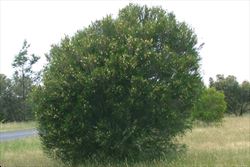
habit (Photo: Rob and Fiona Richardson)
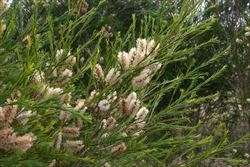
habit (Photo: Rob and Fiona Richardson)
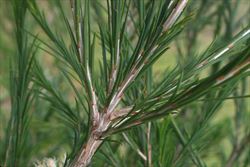
younger branches and needle-like leaves (Photo: Rob and Fiona Richardson)
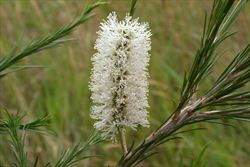
flower cluster (Photo: Rob and Fiona Richardson)
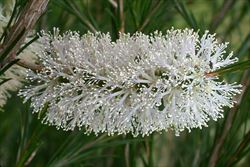
flowers (Photo: Rob and Fiona Richardson)
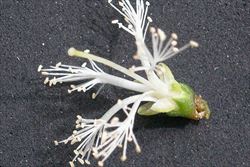
close-up of single flower (Photo: Greg Jordan)
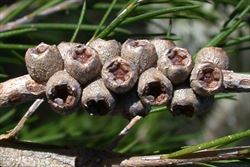
close-up of mature fruit (Photo: Rob and Fiona Richardson)
Scientific Name
Melaleuca armillaris (Sol. ex Gaertn.) Sm. var. armillaris
Synonyms
Metrosideros armillaris Cav.
Melaleuca armillaris (Sol. ex Gaertn.) Sm.
Melaleuca armillaris (Sol. ex Gaertn.) Sm. subsp. armillaris
Melaleuca ericaefolia Andrews
Metrosideros armillaris Sol. ex Gaertn.
Myrtoleucodendron armillare Kuntze
Family
Myrtaceae
Common Names
bracelet honey myrtle, bracelet honey-myrtle, bracelet honeymyrtle, bracelet lace myrtle, giant honey myrtle, giant honey-myrtle, giant honeymyrtle, honey myrtle, paperbark
Origin
Native to south-eastern Australia (eastern New South Wales, eastern Victoria and Tasmania).
Naturalised Distribution
Naturalised beyond its native range in southern Victoria, near Adelaide and on Kangaroo Island in south-eastern South Australia, and in the coastal districts of south-western Western Australia.
Notes
Bracelet honey-myrtle (Melaleuca armillaris var. armillaris) is regarded as a serious environmental weed in Victoria and as an environmental weed in South Australia. This fast growing native species grows naturally in heath communities on headlands and coastal ranges in eastern Australia. It has also been widely cultivated in temperate regions and has spread from these deliberate plantings and invaded coastal heathlands, reserves and roadsides in some parts of southern Australia that are outside its natural range.
As well as replacing native species, bracelet honey-myrtle (Melaleuca armillaris var. armillaris) increases fuel loads in invaded areas. This makes these areas more prone to fires, which can alter the entire ecosystem and also stimulate the germination and growth of further bracelet honey-myrtle (Melaleuca armillaris var. armillaris) seedlings.
It is currently of most concern in regions along the southern coast of Victoria, where it appears on several local environmental weed lists (i.e. in Monash City, Knox City, Yarra Ranges Shire, Surf Coast Shire, Nillumbik Shire, on the Mornington Peninsula and in the Geelong region). It is also listed as a medium priority weed species in the Phillip Island Nature Park.
In South Australia, bracelet honey-myrtle (Melaleuca armillaris var. armillaris) is mainly a problem in the Mount Lofty Ranges and Adelaide Hills area. It is also naturalised on Kangaroo Island and grows on ridges and crags in the coastal areas of south-western Western Australia.

